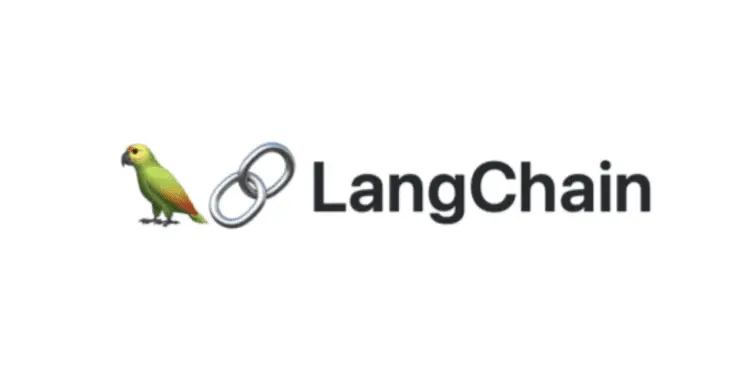As the areas of AI and ML application progress, innovation contributes to the creation of new techniques and concepts constantly. One such revolutionary framework is LangChain. Langchain is a framework that allows applications powered by LLMs to develop. LLMs are trained on vast amounts of data to provide a human-like interface. Example: If an application is using 35% of the LLM available to it, then the Langchain percentage will be 35% as well. If an application is trained on 10% internet data and 25 % from LLM, then the Langchain percentage is 25%.
History
It started when developments were going on in natural language processing (NLP) and machine learning (ML). With the advancement of AI models, requirements for improved approaches to manage and utilize such models emerged. As a result, LangChain became a concept to assemble and optimize the modules of language models, to make them not only applicable but functional for numerous uses.
It was introduced by Harrison Chase in 2022. It started when powerful advancements in NLP took place. At this time, AI has been scaled up to large language models (LLM), like GPT-3 by OpenAI, opening up various possibilities for AI’s future for understanding and generating human language. Nevertheless, the use of these models was highly dependent on sound frameworks that can cater to large operations’ demands.
The need for such a tool was realized as the foundation for creating LangChain, which is detailed in this paper. It linked language models with a methodology on how to organize, implement, and use the language models in actual applications. Its creation was spurred by a group of enthusiasts who are AI researchers, developers, and users who saw the potential of language models in improving different fields.
What is Langchain?
Image Source
Langchain Meaning: LangChain is an open-source framework designed for building applications using large language models (LLMs). Available in Python and JavaScript libraries, it simplifies the development of LLM-driven applications like chatbots by providing tools and APIs for integrating LLMs with external data and workflows. Its modular approach allows developers to compare prompts, use multiple LLMs, and reduce code rewriting. LangChain has gained rapid popularity, becoming one of the fastest-growing open-source projects, especially after the rise of ChatGPT.
The purpose of Langchain is to facilitate the integration, deployment, and management of large language models (LLMs) in various applications. It provides a structured approach to utilizing AI models for natural language understanding and generation, making it easier for developers and organizations to harness the power of natural language processing (NLP). Thus, with the integration of Langchain, it becomes very easy to manage interaction with several large language models and incorporate various resources effortlessly.
At its core, LangChain serves as an interface between language models and their applications. It abstracts the complexity of model management, providing tools and libraries that streamline the process of integrating AI into software systems.

LangChain supports various models, including those developed by OpenAI, Google, and other leading AI research institutions, ensuring compatibility and flexibility.
As technology for Natural Language Processing advances and as more and more business industries integrate it into their operations, this technology holds the staying potential to be virtually everywhere. Here are several characteristics of LangChain: Here are several noteworthy characteristics of LangChain:
- Cohesive and interactive templates that can be changed to fit your needs.
- Designing links of chain that are to be used in more progressive techniques
- Including models for gathering additional data and retrieving the best demonstration of language modelling that includes GPT and HuggingFace Hub.
- Components that can be combined as the user requires or needs them to be.
Understanding how Langchain works with an example
Let’s take a practical example of how a Langchain works. Different e-commerce platforms use Langchain for their customer support issues. Here Natural Language processing is very important to interact with the customers, as it is essential to provide a good user experience and also provide accurate information to the customers at the same time.
Image Source
Here we can see that various data is being fed to the system and it is processing them. Then when a question is being asked to the system, it embeds and then searches through its store for example here in AWS, it searches in the Vector store. The LLM processes the results and provides ranked results to the person making the question.
How does Langchain work?
Image Source
Langchain is a very big and complex framework and understanding how it works might be very difficult. However, let’s break it down step by step and take a closer look at how langchain really works.
Model Selection and Integration
- Selecting a Model: You can start by selecting the type of model that will be able to fit your needs.
- Integration Tools: There are several libraries and the API offered by LangChain which you can integrate in the model you chose.
Customization and Fine-Tuning
- Contextual Adaptation: It is fine-tuned with knowledge of the platform’s environment for a particular and specific context. For example, details of a product and a corporation’s policies on returns for an e-commerce platform.
- Custom Libraries: LangChain also comprises many utilities for deploying and developing one’s own libraries that extend the capabilities of the model for the e-commerce platform.
Deployment
- Deployment Tools: LangChain has features for deploying several models for the purpose of real-time application and use.
- Scalability Solutions: The architecture also allows for integration with large numbers thus making it ready to handle huge data without affecting the efficiency and accuracy.
Image Source
What is Image Recognition? Definition, Algorithms, and How It Works?
Features of LangChain
There are various features of a langchain that actually makes it a very powerful and efficient framework that manages various large language models (LLM). There are various features of Langchain :
- Model Integration: You can use different types of large language models thus satisfying compatibility with the current AI research results. Hence it gives the option as to which model will be suitable for you for your designated need.
- Ease of Use: There are various tools which are available for you to make it simple and manage the large language models. This may include lowering the entry point to the use of NLP among developers and organizations.
- Customization: You have the option to customize it according to your wish and to fine-tune the language models to meet your needs and also the application requirements.
- Scalability: Owing to the capability of handling many interactions and data, LangChain is decent for applications on a large scale especially in the enterprise-oriented sectors.
- Security and Privacy: This concept has reliable security features to avoid leakage of information as privacy is important when implementing AI solutions.
- Continuous Learning: LangChain has the ability to constantly learn and update language models where they can learn and change based on the interaction with users and new data.
- Operability: LangChain is also intended for integration with various software systems and platforms with no compatibility issues with the other systems.
What is Deep Learning (DL)? Definition, Its Type, and How Does it Work?
Importance of LongChain
While training, LLMs learn to write given certain prompts, thus they perform well in non-specific or rather broad contexts but are poor when used and expected to work in a certain specific field they were never trained for.
You can ask prompt questions which in turn will help to attract answers from an LLM. For instance, an LLM can give an answer to how much a certain computer costs by giving a range of an estimate. But, it cannot give the price of a specific model of computers that your company sells, for instance, the Dell E 17.
In the case of prompt engineering, the application of LangChain in the creation of such data-responsive applications reduces intermediate steps toward the development of integrated forms. It is meant to arrive at a wide range of applications based on language models of choice with less effort in creating them, such as chatbots, Q&A, content creation, summing, and others.
What is “Hallucinations in AI” and how does it work?
Limitations of Langchain
Although there are various advantages of langchain, there are also certain limitations of it as well. They are :
- Restricted to text: Langchain can only be applied to text data only. It does not have the capacity to support non-textual data and hence it cannot go beyond a certain point.
- Data Dependency: It only depends upon the data that it is being fed and cannot learn beyond that
- Resource: In order to train a model, large data sets are required and hence making it a highly resource-intensive model.
- Complexity: The integration and customizing of the setup can be very challenging, especially for those who are new to this field.
Conclusion
It can thus be said that LangChain is not only an application, but it is a completely revolutionary approach with the objective of connecting cutting-edge AI with the actual world. It defines a new path on the way to more effective, smart, and efficient responses in the usage of software systems in the contemporary digital environment. Therefore, with AI and NLP advancing further, applications like LangChain will be even more valuable in the future. With LangChain, users can improve and expand complex natural language processing uses in customer service interactions, content creation, data analytics, and other fields.
Common FAQs
LangChain is a framework that simplifies the development of applications powered by large language models (LLMs). It integrates LLMs with internal data sources, enabling prompt engineering for domain-specific tasks without the need for retraining the model. LangChain allows organizations to repurpose LLMs for specialized applications like chatbots, content generation, and summarization by applying workflows like Retrieval Augmented Generation (RAG). This enhances the model’s accuracy and reduces errors. LangChain also abstracts the complexity of AI development, offering templates and tools to streamline integration and customization, backed by strong community support.
Enhanced Reasoning: LangChain allows developers to create agents that break down complex tasks into smaller, manageable sub-tasks, improving reasoning capabilities.
Context and Memory: It enables adding context and memory to LLM completions, making the responses more relevant and thoughtful.
Task Chaining: LangChain excels at chaining complex commands together, allowing for a more dynamic flow of logic in language model outputs.
Structured Development: It helps build agents that go beyond simple completions by adding intermediary steps to handle complex operations effectively.
Core Functionality: LLMs (Large Language Models) primarily generate text based on prompts, while LangChain extends LLM capabilities by enabling complex task handling, data integration, and memory retention.
Task Chaining: LangChain allows developers to chain multiple components (LLMs, prompts, external data, memory) to build sophisticated applications, whereas LLMs on their handle single queries.
Data Access: LangChain integrates external data sources and indexes them for LLMs, enhancing their ability to respond to context-specific queries, which LLMs cannot do natively.
Prompt Engineering: LangChain provides tools like PromptTemplates to refine and reuse prompts, while LLMs process inputs directly without prompt management capabilities.
Memory & Reasoning: LangChain adds memory and reasoning features, allowing LLMs to handle conversations or tasks with context over time.

















